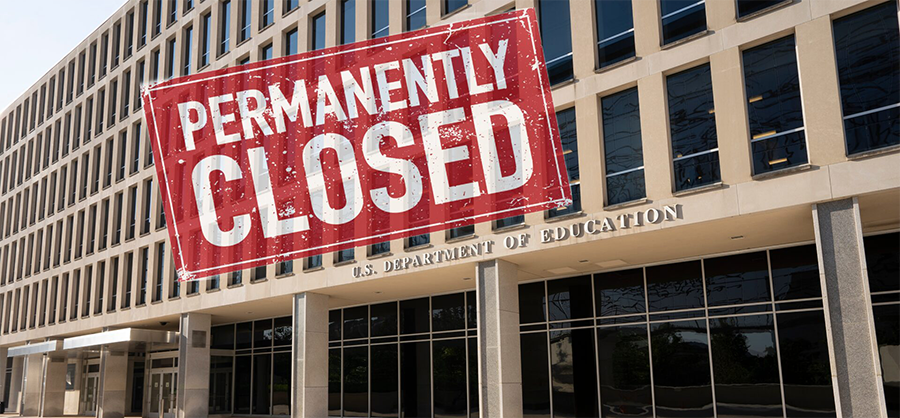By: The Editorial Board – wsj.com – March 14, 2025
Good riddance as Trump moves to dismantle it. But what then?
The layoffs are being handled in the blunderbuss way typical of Mr. Trump and the Elon Musk efficiency operation. Education Secretary Linda McMahon told the Senate during her confirmation hearings that her department was set up by Congress and “clearly cannot be shut down without it.” But Mr. Trump can tell Ms. McMahon to quit doing everything that isn’t required by law. If he does, the public shouldn’t mourn this damaging bureaucracy.
The Education Department was created as a payoff to the National Education Association teachers union, which supported Carter’s candidacy in 1976, in the NEA’s first-ever presidential endorsement. “The idea of an Education Department is really a bad one,” an anonymous liberal House Democrat told the Journal’s Al Hunt in 1979. “But it’s NEA’s top priority. There are school teachers in every congressional district and most of us simply don’t need the aggravation of taking them on.”
When Carter signed the bill, he argued that elevating education to a cabinet post, separate from the old combined Department of Health, Education, and Welfare, would “eliminate unnecessary bureaucracy, cut red tape, and promote better service for local school systems.” It would even “save tax dollars.” Feel free to pause for the laughter to subside.
Five decades later, the Education Department runs a student-loan boondoggle with a $1.6 trillion portfolio, while harassing schools, states and districts with progressive diktats on everything from transgender bathroom use to Covid-19 mask rules. What the Education Department hasn’t done is improve the academic performance of American students. The real action is in the states, including on school choice, which has a proven record.
Randi Weingarten, the union boss of the American Federation of Teachers, is saying that Education Department funding is vital for local schools, while insinuating that Mr. Musk is out to “steal that money, which Congress appropriated for children, to pay for tax breaks for the rich.” But if Ms. McMahon can pass out those school dollars to states without strings attached, while cutting federal regulations, please do. Ms. Weingarten’s crocodile tears for “our kids” ignore that no one has betrayed children more than her union.
The weakness of Mr. Trump’s approach so far, as with everything else, is that there isn’t much of a case being made for any bigger agenda that Republicans want to achieve. All the focus is on setting loose Mr. Musk with his roaring chainsaw. Yet falling U.S. test scores show a tremendous need to broaden the argument on education. Last year 33% of eighth-graders scored below “basic” on reading, according to the National Assessment for Educational Progress. The pandemic shook many parents out of contentment with their schools.
The GOP has a political opportunity to focus on improving school performance, expanding choice for families, and holding districts accountable for results. The nuts-and-bolts policies would have to be implemented at the state and local level, but don’t underrate the federal bully pulpit. Reagan’s education secretaries used the office to push for reforms, as did Betsy DeVos during Mr. Trump’s first term. If Ms. McMahon is a quick study on policy details, she could do the same, while enlisting Republican governors in the project.
The closer Mr. Trump can get to shutting off the lights at the Education Department, the better. But then he’d best have an answer for voters who want to know what’s next to help their children get a better education.
To see this article in its entirety and to subscribe to others like it, please choose to read more.
 Listen Online
Listen Online Watch Online
Watch Online Find a Station in Your Area
Find a Station in Your Area










 Listen Now
Listen Now Watch Online
Watch Online
